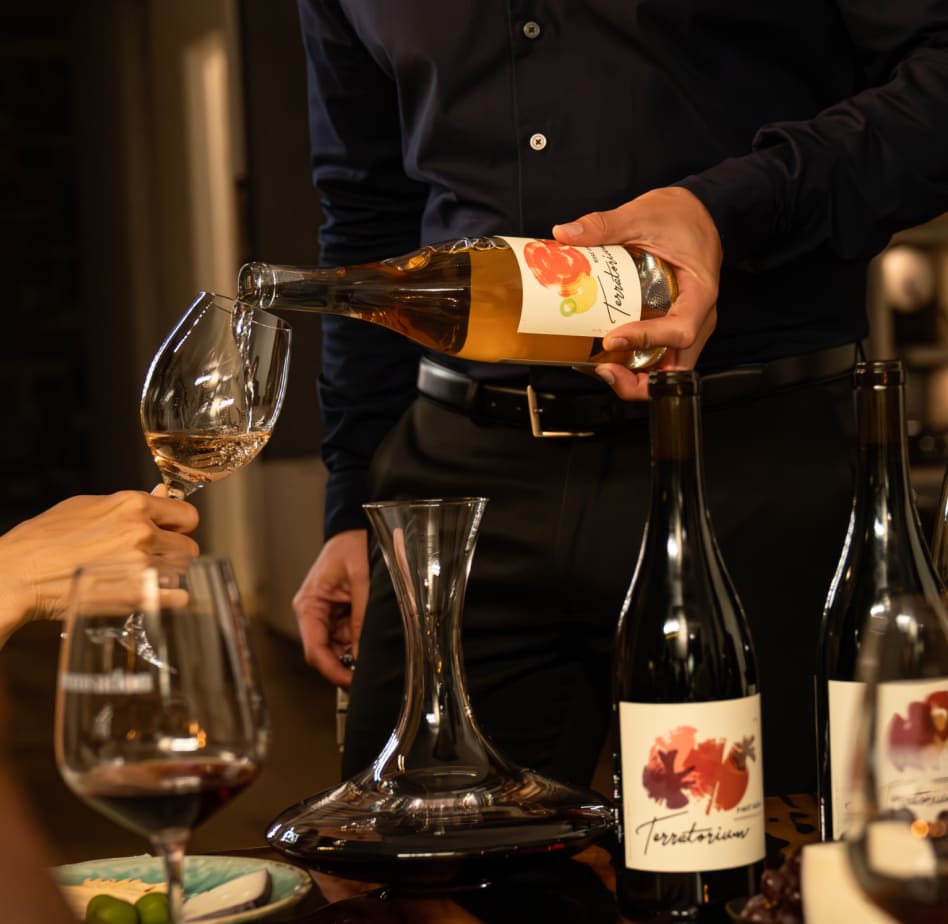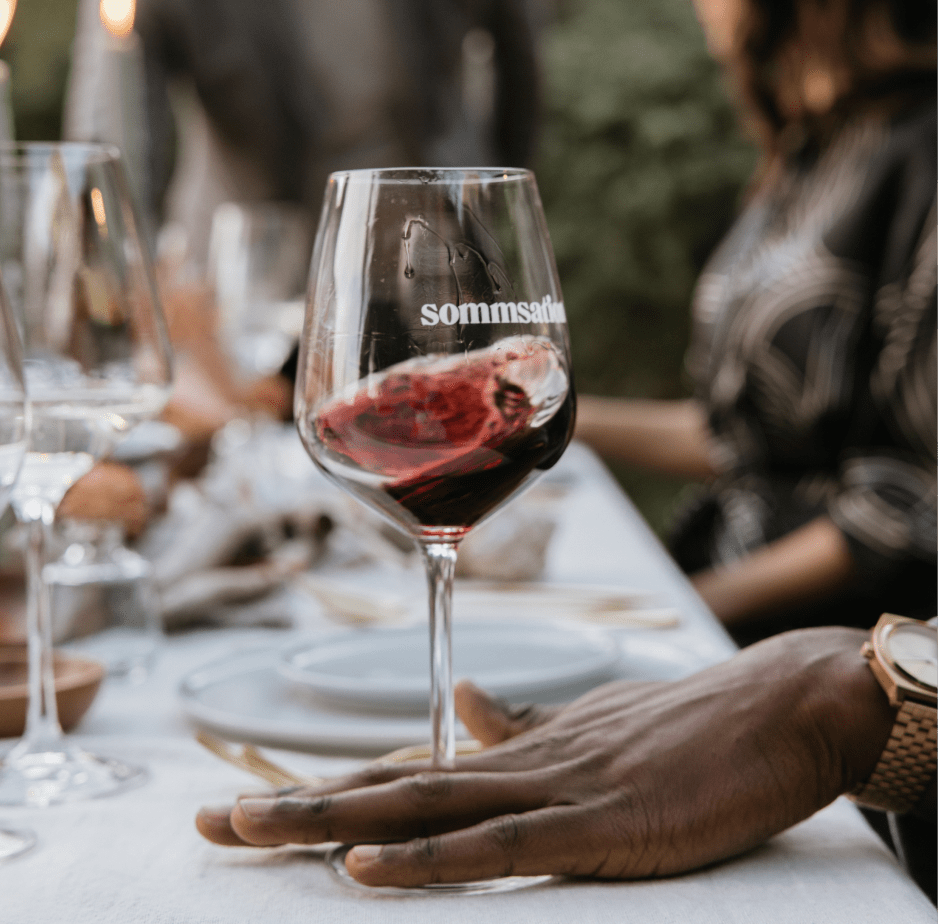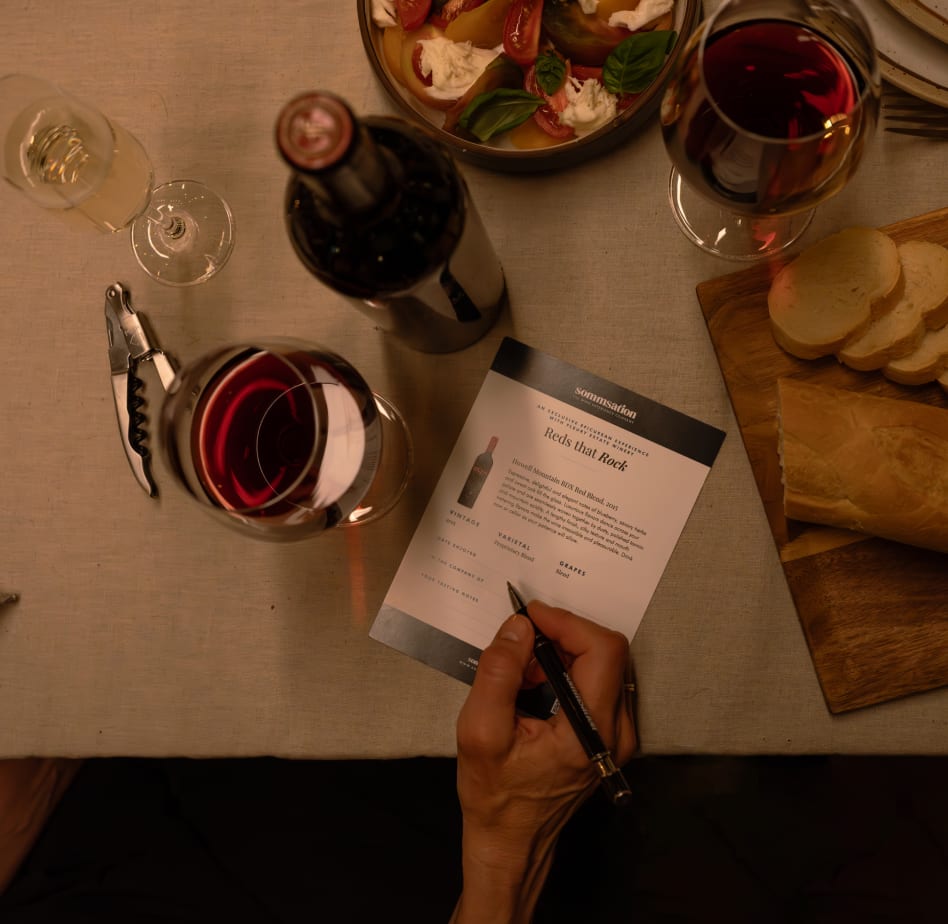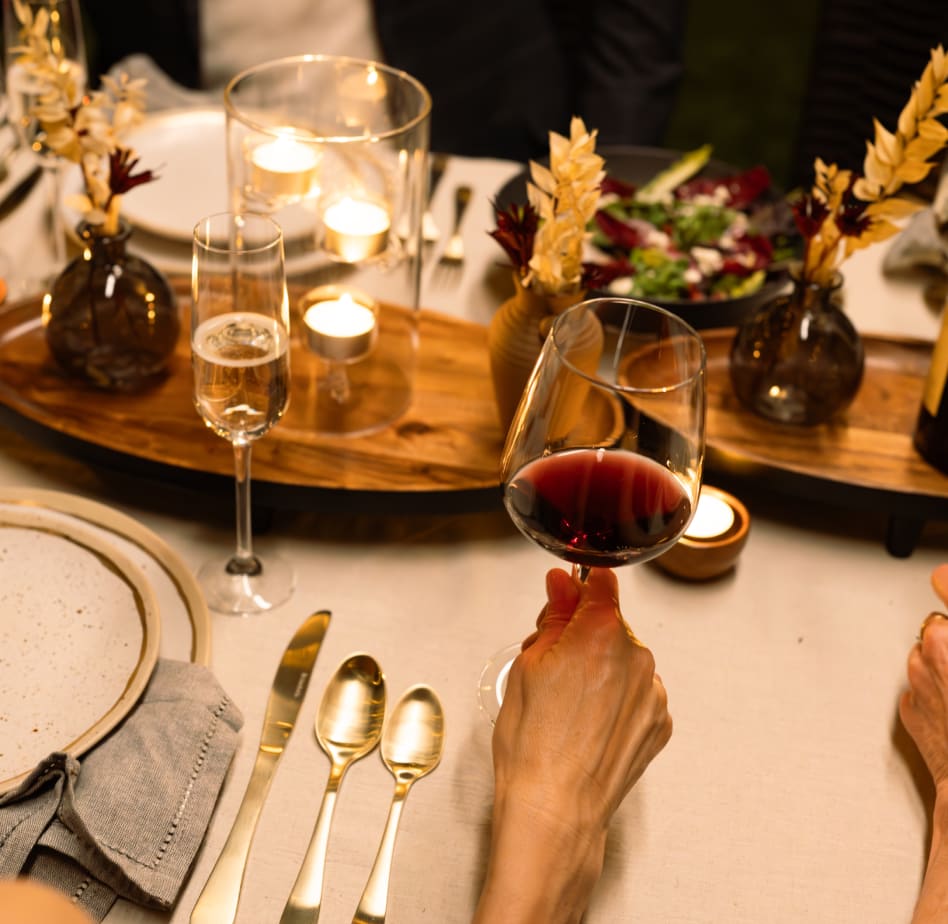Wine
25 Tips to Become a More Sophisticated Wine Drinker
Part Two
October 27, 2023

In Part 1 of our top 25 wine enjoyment tips, we covered the basics on storage, glassware, opening, decanting, and aerating. In Part 2, you’ll learn a few important tips on pouring, tasting, how to talk about wine and how to read labels—which will come in handy when you’re shopping online, in a store, or at a restaurant.

9. Holding the Bottle and Pouring the Wine: Proper Grip, How Much to Pour, and Preventing Drips
Pour your wine holding the bottom of the bottle with one hand. If you hold from below like this, you’ll have more control over the bottle. Pour the wine at about five ounces—for most glasses this is where the glass curves. As you reach the gentle line (the curve of the wine glass), turn the bottle slightly to prevent small droplets from falling.
10. Holding the Glass
Hold your wine glass from the stem, never the bowl. This isn’t just for aesthetics—the temperature from your hand can affect the wine, so it’s best to avoid touching the bowl of your glass. If you need to pass a wine glass to another person, you can easily do so by gripping the base of the glass so the other person can hold the glass by the stem.
11. Swirling the Glass: How & Why
Swirling the wine introduces oxygen, allowing the aromas and bouquet to bloom. A small amount of alcohol evaporates, bringing with it all the phenolic compounds, or aromas, of the wine. This process helps to lift the aromatics and bring them to your nose. You can either swirl with the base of the glass flat on the table, or hold your glass by the stem and swirl gently in the air. If you're struggling to get the perfect swirl, just know that practice makes perfect.12. Smelling the Wine: How & Why
The majority of your sense of taste actually comes from your sense of smell—if you imagine how hard it is to taste food with a cold and congestion, you know how important smell is to your sense of taste. Did you know you only have one dominant nostril at a time, and they take turns? You can tilt the glass from one side to the other to test which nostril is currently the dominant one. It’s also helpful to smell your wine before and after you swirl to pick up the different aromas as they bloom. Pro tip: Put your mouth on the brim of the glass as if you were going in for a taste, and keep it cracked open. This will help air circulate through your system more effectively.13. Sipping Wine: How to Sip and Best Practices
Tasting the wine properly after swirling and smelling is key to enjoying all of its hidden flavors and subtle nuances. Bring a small amount of wine into your mouth and swish it around like mouthwash. Make sure the wine hits all the corners and crevices in your mouth—the roof of your mouth, in front of your teeth, in your cheeks—the wine should flood your mouth. You’ll want to take note of the acid, the tannin, and the texture of your wine.
Think about the last time you had lemon or lime (or any citrus). When you consume something acidic like citrus—or a wine higher in acidity—your salivary glands activate and your mouth starts to water. If your mouth is watering and you can feel your salivary glands light up, you’ve got an acidic wine (all wine is acidic, and runs on a pH scale from around 2-4). Tannins create a very different mouthfeel. Instead of making your mouth water, a tannic wine sucks the moisture out of your mouth. If your teeth, gums, tongue, and cheeks feel dry, you’re drinking a wine with a higher level of tannins. Tannin in wine comes from both the grape skins and seeds, and also oak tannins from the barrels the wine is aged in.
Wine isn’t the only thing in nature with tannin—walnut and almond skins, red beans, cacao, and tea also contain tannin. If you’ve ever left a tea bag in hot water for too long, think about how dry your mouth feels after sipping. This is due to too much tannin being steeped into your tea. For texture, imagine the difference between skim milk, 2% milk, and whole milk. These mouthfeels are what light bodied, medium bodied, and full bodied wines should feel like.

14. Describing Wine: Wine Adjectives and Helpful Wine Terms
When you think about describing wines, start with organic and inorganic foods first. Organic foods are your fruits, vegetables, and herbs. When looking for flavors in white wine, think of citrus, stone fruits, tropical fruits, etc. For reds, look for red, black, and blue fruits (raspberries, strawberries, pomegranate, cherries, plums, etc.). Inorganic compounds would be soil types and stones. First, pick one category and then see how far you can go.For example, if you smell peaches in your wine, what kind of peach, is it a white peach or a regular peach? Is the peach ripe and juicy or is it hard and chewy? Does it taste smoky like grilled peaches? Maybe it's jammy like a baked peach cobbler. The wormhole can go on and on—let your mind explore, and try to get as specific as possible.
If you think a wine smells like something personal and particular to your life (i.e. Grandma’s house) then try to explore why it does in a way to relate to others. Maybe your grandmother had lavender all over her house. Or perhaps there were a lot of mothballs scattered around and it was slightly dusty. While personal experiences help to narrow down the smells in wine, try to delve deeper into them.
At the end of the day, describing a wine is all about finding a way to speak the same language as other people–break down the complexity of wine in a way that others can relate to. Speaking to sensory experiences or finding particular emotions the wine evokes can be helpful. What song comes to mind? Or what musical artist would you pair with this wine? If this wine was a person, how would you describe them? Loud, quirky, shy? When you get to this level of wine description, your ability to connect people to the wine they’re enjoying is elevated.
15. Reading Wine Labels: How to Pronounce Wines and Other Important Information on Labels
There's a ton of helpful information on most wine labels. Deciphering that information can be tricky thanks to different languages, formats, and regional laws. Some basic terms you might encounter on the labels are grape varieties, location where the wine is from, vintage (the year the grapes are grown), alcohol percentage, the wine’s producer, and sometimes the sweetness level, which could be on the scale of Sweet to Dry. For Sparkling wines producers use terms like:
Brute Nature: Bone-dry with very little sugar left in the wine (approximately 0-3 grams of sugar per liter)
Extra Brut: Very dry with little detectable sugar in the wine (around 0-6 grams of sugar per liter)
Brut: Dry and one of the the most commonly seen (ranging from 0-12 grams of sugar per liter)
Extra Dry: Medium dry, which means there is some detectable sugars on your palate (from 12-17 grams of sugar per liter)
Dry: Also known as medium sweet with definite noticeable sugar on the palate (approximated 17-32 grams of sugar per liter)
Demi Sec: This wine’s sweetness is apparent (a healthy dose between 32-50 grams of sugar per liter)
A wine’s alcohol percentage can vary up to 1% either direction. Labels are allowed this leeway, as some producers do not print labels for every vintage. They may use the same generic labeling and add a small circular sticker to the top of the bottle with the vintage, saving the winery money and time by ordering their labels in bulk.
When it comes to pronunciation of wine names and other descriptors on the labels, don’t stress. It’s absolutely okay to mispronounce something or to ask an expert how it's pronounced. Wine labels can be written in any language, and there’s no shame in being unable to read them.
In fact, there are common wines that are very often mispronounced. Veuve Clicquot, the popular Champagne around the world with an orange label, is often pronounced “Voove” Clicquot, but it’s actually pronounced”‘vuhv” (rhymes with “love”)—translating to “widow” in French. The important thing is being open to learning.

16. Navigating Wine Lists and Ordering Wine at Restaurants
Wine lists are set up differently in restaurants, so ordering can seem daunting. If there’s a sommelier at the restaurant, be sure to ask for help with your selection. They tend to know the wines on their list the best—they often curate the list themselves—and they enjoy the process of selecting a wine you’ll love so much that they’ve made it their career. Make sure to describe what you typically enjoy drinking, what you (and the rest of your party) will be eating, and your budget to help them narrow down your options.
Once you or someone at your table selects the wine, the sommelier or server will present the wine to the person who ordered it—typically, that person is the evening’s host or the person who anticipates paying the bill.
Your sommelier or server will normally pour a small taste of wine for you to try. Commonly misunderstood, this isn’t a taste to make sure you like the wine. This small taste is meant for you to check that the wine isn’t flawed. If a sommelier recommends a bottle and you don’t like it, then we encourage you to let them know. In this case, they would likely take the bottle back and try again. The same can't always be said for ordering a bottle on your own, so it's best to seek an expert's advice if there's one available.
There’s much more to being a sophisticated wine drinker than just opening a bottle and taking a sip. The more wine you drink, the more comfortable you’ll be opening, swirling, smelling, and tasting the wine. Try some of these tips the next time you open a bottle or order at a restaurant, and get ready for Part 3 of our tips for being a more sophisticated wine drinker.